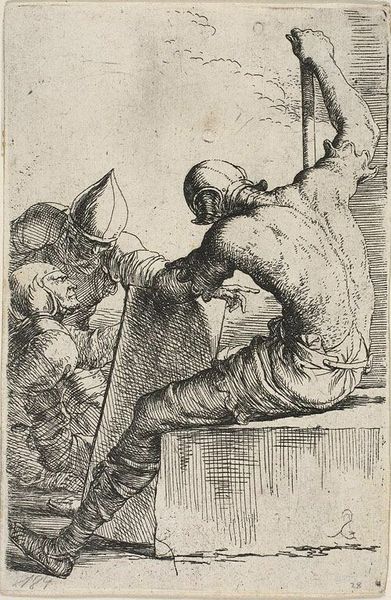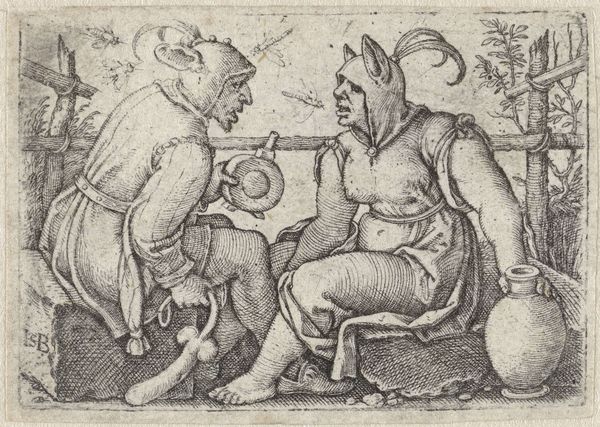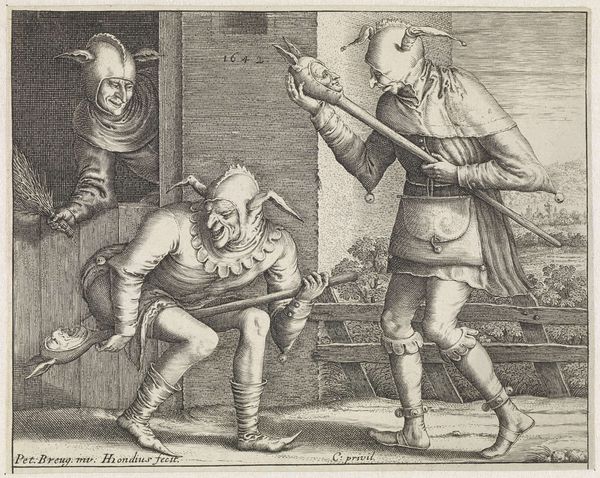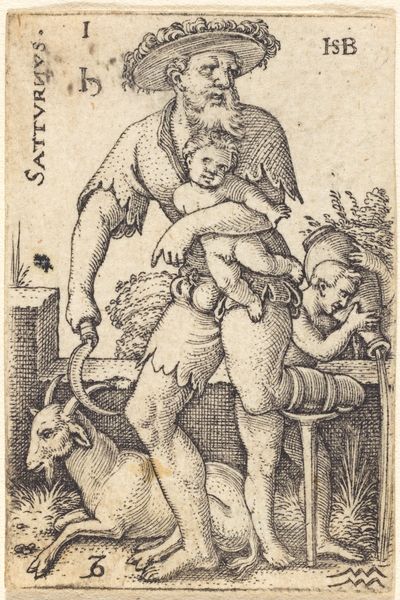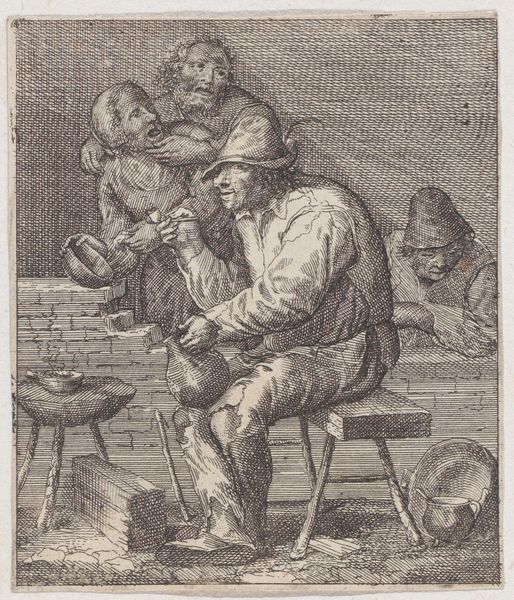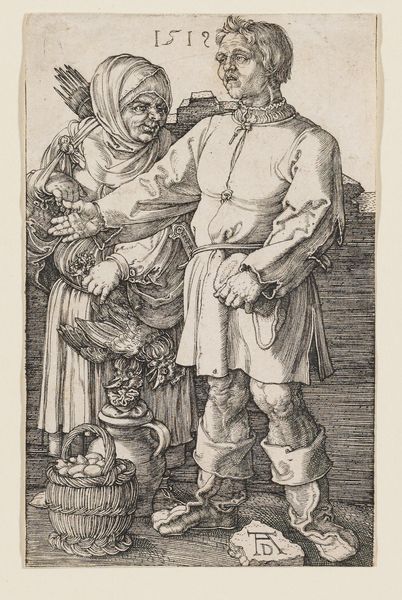
drawing, print
#
drawing
# print
#
caricature
#
mannerism
#
figuration
#
history-painting
Dimensions: sheet: 3 3/4 x 12 5/16 in. (9.6 x 31.3 cm)
Copyright: Public Domain
Editor: Wendel Dietterlin the Younger's "Procession of Monstrous Figures", created around 1615, is a bewildering, strange parade. It has such an unsettling atmosphere. What do you make of this procession? Curator: It's certainly a striking image, and very much a product of its time. Consider the historical context: it comes from the Mannerist period. What role do you think representations of the grotesque, like these, played in society back then? Editor: Well, seeing such exaggerated, almost nightmarish figures...did it reflect societal anxieties or offer a form of catharsis, perhaps? Curator: Exactly. These "monstrous figures" are less about pure aesthetic representation and more about the anxieties bubbling beneath the surface. Look at the prominent display of these figures in prints - consider prints as the mass media of the day. Their availability speaks to a widespread fascination, doesn’t it? The art market, the patrons and consumers, actively fueled this kind of imagery. Editor: So, this print, even with its outlandish characters, could be seen as a commentary on societal anxieties that are actively promoted, like the evening news might today? Curator: Precisely. Also, we see caricatures, an exaggeration of reality, and figuration, playing with accepted ways of seeing and representing human likeness. Were you to encounter this print outside a museum context, what role do you think this image may have fulfilled for viewers? Editor: Hmm, maybe in some instances it helped fuel anti-establishment feelings by showing important leaders of the day as ugly or stupid looking, or maybe just to create strange entertainment in the household. Curator: Yes! What strikes you most about how the composition directs our eye? Editor: The linear composition really pulls the eye across all the figures. The flow implies the progression is non-stopping, which to me almost alludes to time as fleeting and life being ephemeral. Looking at this through your point of view has made me realize how deeply socio-political forces influence not just the art itself but how the audience interacts with it!
Comments
No comments
Be the first to comment and join the conversation on the ultimate creative platform.




